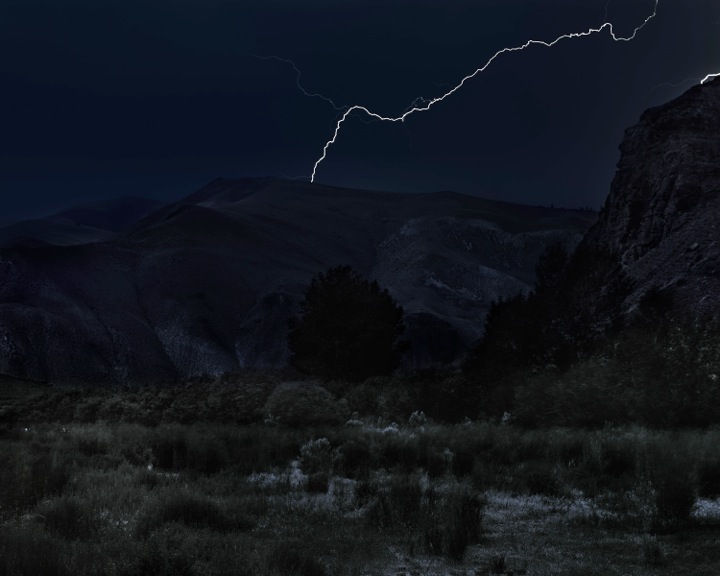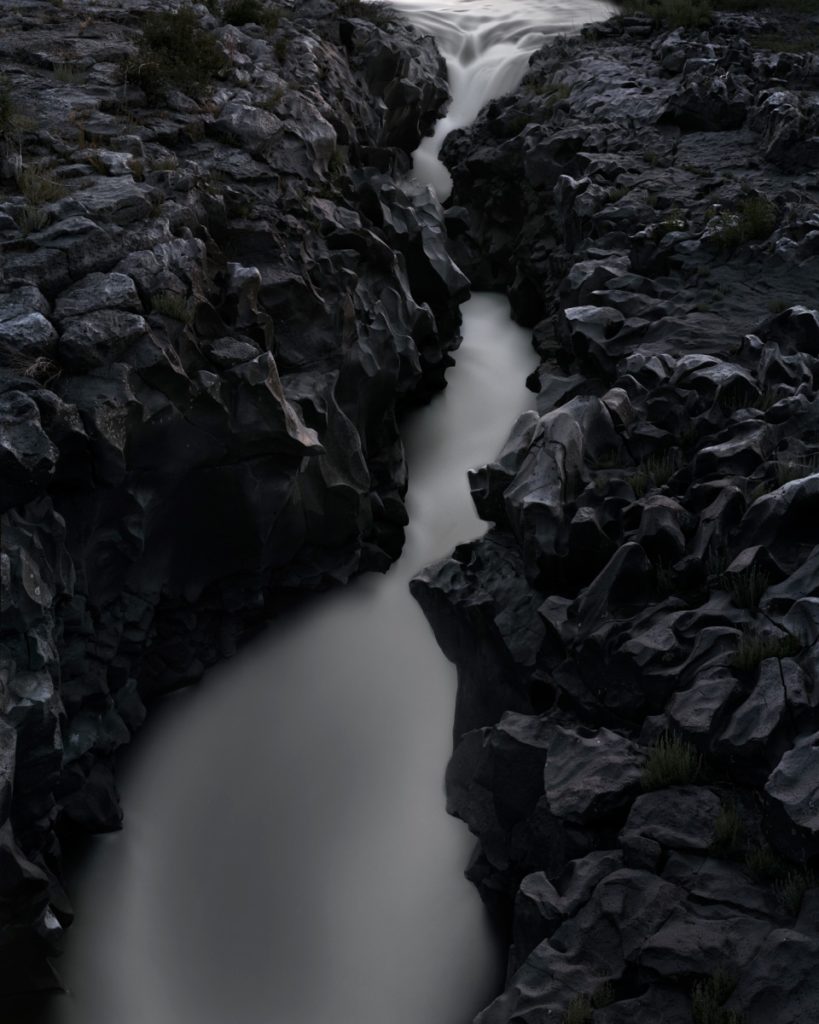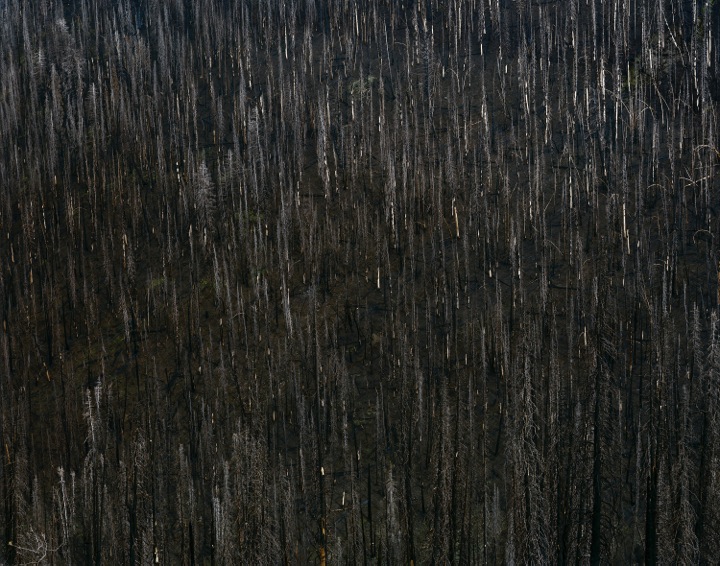“Laura McPhee: Desert Chronicle”—on view at Boston’s Carroll and Sons gallery from Dec. 4, 2019, to Feb. 1, 2020—is a concise exhibition of five large photos from the Brookline artist’s latest, ongoing project.
The pictures here include images of distant hillsides of trees that read like slashing lines; the whoosh of water blurred smooth white by a long shutter exposure as it rushes through a bony black lava flow; lightning crackling out of a blue-black night to touch down in mountains and scrubby desert. They are cool, sumptuous color photos of landscapes so stark they seem like black and white.
Over the years, McPhee’s lush, large color landscape photos have ranged from storefronts, palace exteriors, colonial interiors and street vendors of Calcutta, India, to new growth sprouting at the feet of the charred trunks left by a forest fire that raged through the White Cloud Mountains of central Idaho. Her 2006 “River of No Return” exhibition at Boston’s Museum of Fine Arts used her large-format view camera to describe a valley in Idaho—split rail fences zigzagging across a valley floor, a bloody carcass being rendered among snowy birches, a camouflaged hunter crouched in the brush beside a stream, plus a sprinkling of fashion-pretty portraits of a young woman.

McPhee “is currently working in the desert west of the United States,” according to her website, “where she is chronicling visual stories about time, both geologic and human.” McPhee, who is presently chair of the photography department at Massachusetts College of Art and Design in Boston, often seems to be roaming a mythological American West of vast empty landscapes with scars from human extractive use creeping in at the edges.
“Desert Chronicle” is a working title for photographs that grew out of her “River of No Return” and “Guardians of Solitude” series. “Initially, Laura was retracing the path of her pioneer grandmother, but the project has grown beyond those known locations,” according to the gallery.

Other “Desert Chronicle” photos have depicted a strip mine, the parched bottom of a dam, a slivery river winding through bluffs, fog and what looks like a storm rolling over desert buttes. They are photos about the ways of water, about landscapes vast and empty of people but littered with their remains: dirt roads, worn fences, exhausted houses, lonely grain elevators, abandoned gas stations, junk yards of rusting mid-20th century cars.
“Made with film and a large-format view camera, the photographs envelop time, both geologic and human,” McPhee writes on her website. “A serpentine river has cut deep meanders through the land. A gold mine on the edge of the Black Rock Desert is an incision in the land, exposing its ruddy interior. A still-life found on slickrock in the Navajo Nation reveals fragments of human presence—machine parts, zippers, desert- varnished tin cans, a tiny plastic toy among shards of glass and rust. Collectively, the pictures evoke contemplation of how we use the earth and to what ends. A meditation on our material lives and the unintended consequences of humanity’s attempts to control and manage nature, the images depict our paradoxical efforts as we variously restore, protect, alter, and exploit the land.”
If this is the kind of coverage of arts, cultures and activisms you appreciate, please support Wonderland by contributing to Wonderland on Patreon. And sign up for our free, weekly newsletter so that you don’t miss any of our reporting.

